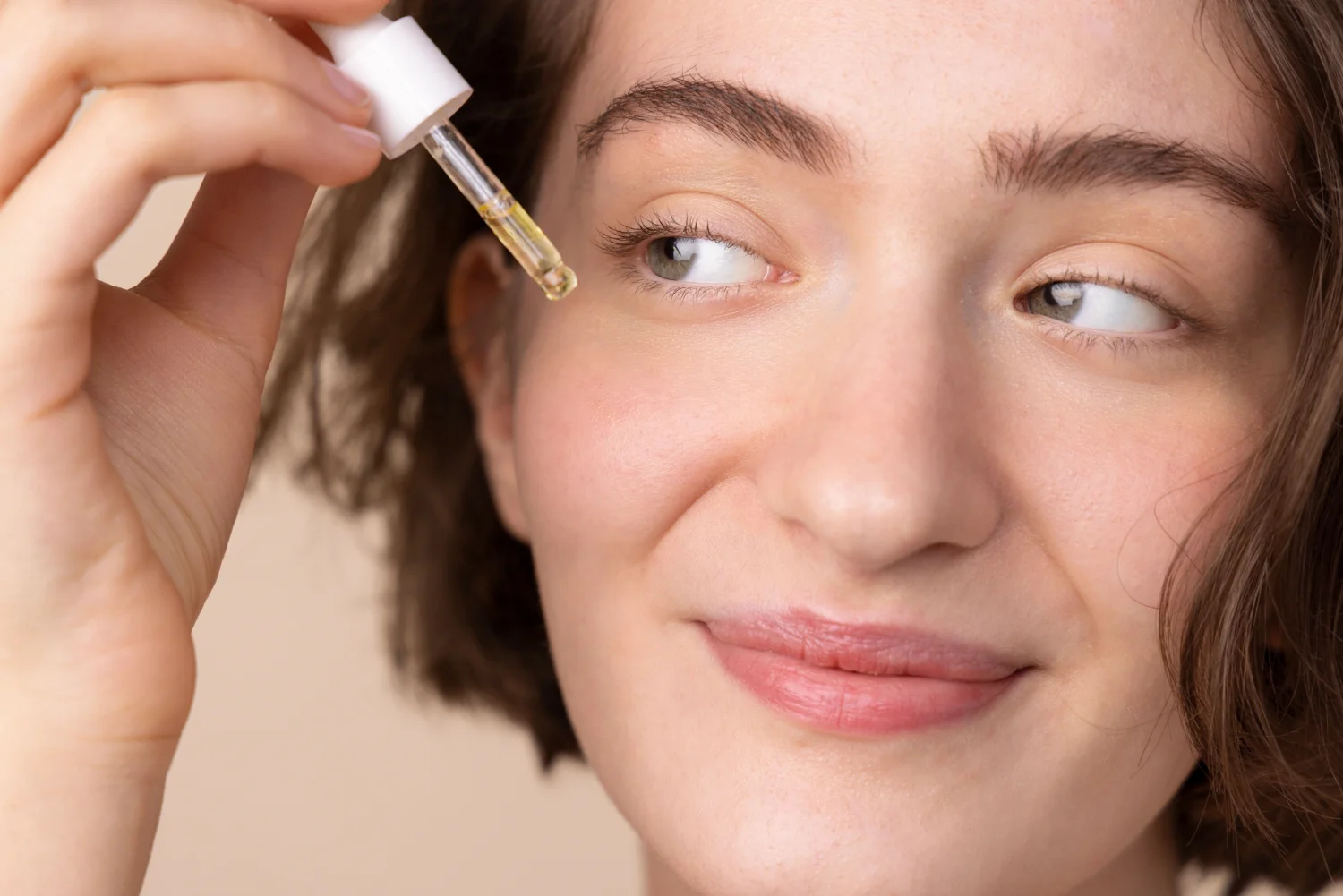Encapsulated Retinol: The Gentle Giant of Skincare
Have you ever wondered how some people seem to defy the aging process, their skin glowing with youthful vitality? Perhaps you’ve tried countless skincare products, hoping to find that magic elixir that will turn back the clock. Well, my friend, look no further. The answer lies in a tiny but mighty ingredient called encapsulated retinol. In this article, we’ll delve into the science behind it, explore its benefits, and guide you on how to incorporate it into your skincare routine. So grab your favorite mug of chamomile tea, settle into your coziest chair, and let’s embark on this journey to healthier, more radiant skin.
What Is Exactly Encapsulated Retinol?
Dr. Meghan Feely, a board-certified dermatologist, describes encapsulated retinol as a version of its traditional counterpart. Here’s the secret: It envelops retinol in a protective barrier. The goal? To enhance stability and allow deeper penetration into the skin while minimizing potential side effects. Think of it as a stealthy delivery system, ensuring all the benefits without the drama.
When you apply encapsulated retinol, it tiptoes through your skin’s layers, thanks to its moisturizing outer coating. It’s like a slow-release capsule, depositing retinol over time. This gradual infusion ensures your skin reaps the rewards without the harsh aftermath.
What’s the Difference Between Encapsulated Retinol and Pure Retinol?
Alright, let’s break it down in simple terms. Encapsulated retinol and pure retinol are both forms of vitamin A that work wonders for your skin, but they have a few key differences.
Traditionally, pure retinols—those unsung heroes of skincare—float freely, akin to delicate glassware precariously perched on a shelf. Their vulnerability lies in exposure to the elements: air, light, and the whims of fate. Picture a tightrope walker without a safety net, balancing on the edge of transformation. These retinols, while potent, can be a tad unpredictable. They swoop in, promising youthful skin, but sometimes leave behind a trail of redness, dryness, and irritation. It’s like inviting a tempest into your skincare routine—a storm that might bring both rejuvenation and chaos.
Enter encapsulated retinols. Imagine these retinols as tiny warriors, clad in protective armor. They arrive at the battlefield—your skin—with a mission: to deliver the magic of retinol without the collateral damage. Their secret weapon? A lipid or fatty acid shield is akin to bubble wrap. This encapsulation isn’t just for show; it’s a game-changer. Here’s why:
- Stability Boost: Encapsulation ensures that retinol remains steadfast. No more wobbly molecules stumbling around, uncertain of their purpose. The protective layer shields them from external forces, allowing them to maintain their potency.
- Deeper Penetration: Think of encapsulated retinol as a stealthy ninja. It tiptoes past the superficial layers, slipping through the skin’s defenses. Unlike its free-spirited counterpart, it doesn’t merely skim the surface; it dives deep. And there, amidst collagen fibers and epidermal cells, it whispers, “I’ve got this.”
- Gentle Touch: Remember the redness and flakiness that sometimes accompany retinol use? Encapsulation eases the transition. It’s like a slow-release mechanism, ensuring a gradual infusion of goodness. Your skin applauds—no more sandpaper sensations or unexpected drama.
So, when you reach for that encapsulated retinol serum, know that you’re not just dabbing on skincare; you’re inviting a well-prepared ally. It’s the difference between a wild, untamed stallion and a loyal steed—the latter carries you smoothly toward ageless beauty, leaving chaos behind. Embrace the encapsulated magic, and let your skin revel in its newfound resilience!
Who Should Use Encapsulated Retinol?
In short, everyone! Whether you battle acne, fine lines, uneven skin tone, or simply crave luminosity, this superhero ingredient is your ally. It’s like having a wise mentor who whispers, “You’ve got this!” every time you apply it.
How Does Encapsulated Retinol Work?
Now, let’s talk about how encapsulated retinol does its magic on your skin. When you apply it, the retinol goes through your skin’s surface and gets to work deep down. Once inside, it changes into something called retinoic acid, which is the active form of vitamin A. This acid then boosts the production of two important proteins: collagen and elastin. These proteins help your skin stay firm and elastic.
As the encapsulated retinol keeps releasing into your skin, it speeds up the process of shedding old skin cells. This helps reduce the appearance of wrinkles and fine lines, fades dark spots, makes your pores look smaller, and gives your skin a smoother texture. In short, it helps you get that healthy, glowing look you’ve been dreaming of!
Benefits of Encapsulated Retinol
So, what can encapsulated retinol do for your skin? Unlock the incredible benefits:
- Reduces Fine Lines and Wrinkles: Like its pure counterpart, encapsulated retinol smooths fine lines, fades wrinkles, and evens out skin tone. It’s the Gandalf of skincare, whispering, “You shall not age!”
- Improves Skin Texture: By getting rid of dead skin cells, encapsulated retinol leaves your skin feeling softer and looking smoother.
- Dark Spots, Begone! Encapsulated retinol tackles hyperpigmentation, acne marks, and sunspots. It’s your tiny army of skin warriors, marching toward a flawless complexion.
- Minimizes Pores: Say goodbye to large pores! Encapsulated retinol tightens them up, leaving your skin looking more refined.
- Gentle on Sensitive Skin: If your skin is sensitive, this gentle giant has your back. No sandpaper sensations here! The slow-release mechanism ensures a gradual infusion of goodness.
Adding Encapsulated Retinol to Your Skincare Routine
Are you excited to try encapsulated retinol for yourself? Here’s how to do it:
- Start Slowly: If you’re new to retinol, start with a lower concentration and use it a few times a week. Then, gradually increase how often you use it as your skin gets used to it.
- Apply at Night: Encapsulated retinol works best when applied at night. After cleansing and toning your skin, gently massage a small amount of retinol cream or serum onto your face and neck.
- Follow with Moisturizer: Since retinol can be drying, make sure to follow up with a moisturizer to keep your skin hydrated.
- Use Sunscreen During the Day: Retinol can make your skin more sensitive to the sun, so always wear sunscreen during the day to protect your skin.
- Be Patient and Consistent: Results won’t happen overnight, so be patient and stick to your routine. With regular use, you’ll start to see improvements in your skin.
Choosing the Right Encapsulated Retinol Product
When it comes to skincare, selecting the perfect encapsulated retinol product can feel like navigating a maze of options. Fear not! I’m here to help you navigate through the process. Let’s consider some important factors together:
- Ingredients List: Begin by scrutinizing the ingredient list. Look for encapsulated retinol as a prominent component. Ideally, it should be listed within the first few ingredients. Remember, quality matters more than quantity.
- Concentration: The strength of encapsulated retinol varies across products. Some are gentle, while others pack a more potent punch. If you’re a retinol newbie, start with a lower concentration (around 0.3% to 0.5%) and gradually work your way up. Experienced retinol users can opt for higher concentrations (up to 1%).
- Formulation: Encapsulated retinol comes in various formulations—creams, serums, and even oil-based products. Consider your skin type and preferences. Creams are great for dry skin, while serums absorb quickly and suit oily or combination skin. Oil-based options provide extra hydration.
- Texture and Absorption: Texture matters! Nobody wants a sticky or greasy face. Select a product that feels good and is comfortable on your skin. Lightweight, fast-absorbing formulas are usually winners.
- Additional Ingredients: Some encapsulated retinol products come with bonus ingredients. Think hyaluronic acid for hydration, niacinamide for brightening, or peptides for collagen production. These extras can enhance the overall benefits.
- Packaging: Encapsulated retinol is sensitive to light and air. Opt for products in opaque, airtight containers or pump dispensers. Tubes are also a good choice—they minimize exposure to external elements.
- Patch Test: Always, always patch test! Apply a small amount of the product behind your ear or on your inner wrist. Give it a day and observe for any negative reactions. Remember, safety first!
- Frequency and Timing: Start slow.
Start off by applying encapsulated retinol once or twice weekly. As your skin adapts, you can gradually increase how often you use it. Nighttime application is ideal, as retinol can make your skin more sun-sensitive. - Patience: Rome wasn’t built in a day, and neither is flawless skin. Be patient and allow your selected product to do its wonders. It may take a few weeks before you start noticing results.
- Consult a Professional: If you’re unsure, consult a dermatologist or skincare specialist. They can recommend a product tailored to your specific needs.
Which products can you use with encapsulated retinol, and which should you skip?
1. Encapsulated Retinol and Other Retinol Products
Dr. Meghan Feely, our skincare expert, advises caution when it comes to doubling up on retinol products. Mixing them like a double date could lead to unwanted side effects such as redness, sensitivity, and irritation. Encapsulated retinol, with its thoughtful approach, targets deeper skin layers, but let’s not forget about the surface. It’s best not to overwhelm our skin with too many suitors. Stick to one retinol product per area of the body, and your skin will thank you.
So, my friend, whether you’re flying solo with encapsulated retinol or mixing it up with other skincare goodies, remember: moderation is key. Your skin deserves a harmonious symphony of ingredients, not a chaotic clash.
2. Encapsulated Retinol and Vitamin C
- A Delicate Dance: Encapsulated retinol and vitamin C are like dance partners—they complement each other but need some space.
- Timing Matters: Make sure to use them at different times of the day. Vitamin C loves the morning sun (hello, antioxidant protection!), while retinol prefers to work its magic at night.
- Top of Form
- Alternate Days: If you’re a skincare enthusiast, alternate between vitamin C and encapsulated retinol. This prevents potential irritation.
- Buffering: If you’re new to these ingredients, consider applying a lightweight moisturizer before using retinol or vitamin C. This acts as a buffer, reducing the chances of sensitivity and allowing your skin to ease into the routine.
3. Ingredients That Play Well with Retinol
- Hyaluronic Acid: The hydration hero! Hyaluronic acid keeps your skin plump and happy while retinol does its magic.
- Niacinamide: A tag team for radiant skin. Niacinamide soothes redness and supports retinol’s anti-aging efforts.
- Peptides: These little warriors boost collagen production, making your skin firmer and smoother.
- Ceramides: They strengthen your skin barrier, which is crucial when using retinol.
- Gentle Exfoliants (AHAs/BHAs): Exfoliation + retinol = glowing skin. But tread lightly—don’t overdo it.
4. Ingredients to Avoid with Retinol
- Benzoyl Peroxide: It’s like oil and water with retinol. They cancel each other out.
- Alpha Hydroxy Acids (AHAs): Use them separately from retinol. Overlapping can lead to irritation.
- Physical Exfoliants (Scrubs): They’re a no-go. Retinol makes your skin more sensitive, and scrubs can be abrasive.
Potential Side Effects of Encapsulated Retinol
While encapsulated retinol can do wonders for your skin, it’s important to be aware of potential side effects:
- Dryness and Peeling: Retinol can cause dryness and peeling, especially when you first start using it.
- Irritation and Sensitivity: Some people may experience redness or irritation when using retinol.
- Increased Sun Sensitivity: Retinol can make your skin more sensitive to the sun, so make sure to wear sunscreen.
- Purging: In some cases, retinol can cause a temporary increase in acne before it gets better.
If you experience any severe or prolonged side effects, stop using the product and consult a dermatologist.
How Long Does It Take for Encapsulated Retinol to Start Working?
Adding encapsulated retinol to your skincare routine requires a bit of patience as you wait for those visible changes to show up. It’s like planting a seed and waiting for it to sprout. Initially, within the first few weeks, encapsulated retinol quietly gets to work beneath the surface of your skin. Although you may not see dramatic improvements right away, trust that progress is happening. Around four to six weeks in, encapsulated retinol starts to dive deeper into your skin cells, encouraging collagen production, speeding up cell turnover, and fading those stubborn dark spots. You might start noticing subtle improvements like smoother skin and softer fine lines. As time goes on, usually around two to three months, your skin undergoes a full transformation. Encapsulated retinol continues to refine your skin’s texture, minimize pores, and enhance overall radiance, leaving you with skin that’s worthy of compliments. Remember, consistency is key, so keep applying encapsulated retinol regularly, and soon enough, you’ll be reveling in that coveted glow. Skincare is definitely a journey, so stay committed, and the results will follow!
Top Picks: Must-Try Encapsulated Retinol Products
Let’s delve into the details of some encapsulated retinol products available on Amazon:
1. Advanced Clinicals Encapsulated Retinol Face Cream Moisturizer
This fragrance-free facial lotion helps diminish wrinkles, crepey skin, and age spots. It contains encapsulated retinol for effective anti-aging benefits without irritation. A 2 fl oz bottle is priced at $9.99 with a Subscribe & Save discount.
2. ML Delicate Beauty 0.5% Encapsulated Retinol Cream
This all-natural face cream is gentle yet effective. It includes squalane, glycerin, and vitamin A. A 30 ml bottle costs $27.95.
3. The Ordinary Retinol 1% in Squalane
A popular choice, this product offers pure retinol in squalane. It comes in a 30 ml bottle priced at $11.86.
4. Hygieia Encapsulated 2% Retinol Cream
This liposomal anti-wrinkle cream is suitable for face, neck, and body. It absorbs deeply and can be used day or night. A 4 oz jar costs $44.99 with a Subscribe & Save discount.
5. Biossance Squalane + Phyto-Retinol Serum
This serum features encapsulated time-release retinol to reduce fine lines, wrinkles, discoloration, and texture issues. It’s gentle on the skin and comes in a 1.01 fl oz bottle priced at $72.50.
6. Retinol Serum 2.5% by Eva Naturals
This double-sized bottle minimizes wrinkles, prevents sun damage, and fades dark spots. It contains hyaluronic acid and vitamin A. A 2 fl oz bottle costs $14.99 with a Subscribe & Save discount.
Conclusion
Encapsulated retinol is truly a skincare superhero, providing a host of benefits for achieving that radiant, youthful glow. By adding encapsulated retinol to your skincare routine and following a few easy tips, you can unlock its transformative effects and welcome smoother, more luminous skin. Just remember to take it slow, be patient, and tune in to what your skin is telling you. With consistent use and proper care, you’ll be on track to achieving your skincare dreams and embracing the beauty of healthy, glowing skin.














